Everything you need to know about route optimisation [2026 Guide]
Route optimisation has become a key part of the delivery industry and e-commerce as it can offer many benefits to your product, service or brand when implemented well. Here is your guide to everything you need to know about route optimisation and how it can help your business become more efficient and save money.
What is route optimisation?
Route optimisation is the process of finding the most efficient and cost effective route. However it’s a little more complex than simply getting from point A to point B in the least amount of time. Route optimisation includes vital factors such as:
- Number of stops
- Driver availability
- Driver locations
- Drop-off times
- Rest periods
- Real-time traffic conditions
- Vehicle type and capacity
Route optimisation is important for more than just customer deliveries, but valuable to the service and food delivery industries; any industry that has to factor stops, drop-offs and deliveries into their business model. Whether you opt for a manual or automated optimisation strategy will depend on the size of your company and your needs. If you have hundreds or even thousands of stops a day, optimising this part of your business will help you lower operational costs and keep your customers’ happy.
Manual route optimisation
Smaller operations might be able to manage the process of manually optimising their travel routes. This method relies on a pen and paper approach and uses a drivers’ local knowledge to figure out the fastest routes and busiest times on the road. In the era before the Internet, this was the only kind of route optimisation available, with things becoming more streamlined as drivers began to rely on Google Maps and other location tracking software to make deliveries.
However, for companies that need to deliver hundreds of packages a day, manually optimising every route can be time consuming and not cost-effective. Despite that, up to 52% of businesses that implement route optimisation still go about the process manually. Most of the time this kind of route optimisation will be static routing, as it only needs to be updated every 6-12 months, or when very necessary.
Route optimisation process
Automated route optimisation
Many modern organisations opt for route automation software that makes this process more straightforward. Using a route optimisation API will help you create optimised maps and give you real-time information about different routes. Algorithms automatically reduce delivery times, and take into account the various factors that can hold up a stop, giving your customers’ as accurate of a time as possible for when to expect a knock at the door.
Automated route optimisation software can be used to plan the most effective and efficient vehicle routes, build schedules that work for your business and improve driver satisfaction which reduces the historically high turnover rates in this industry. Automated optimisation processes look like:
- GPS tracking integration
- Data analytics
- Automatic scheduling software
- Real-time traffic updates
- Smartphone accessibility
What is the difference between static and dynamic route optimisation?
Static route optimisation is the more traditional way to plan deliveries and drop-offs. This kind of optimisation will only be updated once in a while, and does not take into account many (if any) of the day-to-day factors that can hold up the delivery process. Routes are predetermined by the business or drivers, and will be followed from start to finish regardless of real-time updates on the road. An example of a static route would be a bus that follows the same route repeatedly.
With dynamic route optimisation, routes are calculated daily instead of (in some cases) annually or semiannually. It allows for a lot more flexibility and scalability, leveraging automated processes to give real-time information on-the-go, updating the route based on traffic, road works and weather — all things that can impact a driver getting to their destination. For the customer, this technology allows them to efficiently track their deliveries with updated estimated arrival times.
Benefits of route optimisation
So why is it important to think about delivery strategy and route optimisation? The benefits it can provide are numerous, and in competitive industries it can even improve your bottom line and put you a step ahead. Benefits of route optimisation include:
Increased efficiency
When distances are reduced and barriers to delivery are removed, the time between each drop-off will be significantly less than it was before. Route optimisation can boost employee productivity and allows for an increase in deliveries per day. This will have a direct impact on both customer satisfaction and your bottom line.
Reduces costs
A good route optimisation strategy reduces several important costs, such as fuel, operational and additional payroll during busy periods. In fact, implementing innovative software solutions such as automated route optimisation processes can help reduce delivery costs by 25%. [source: Elogii].
Improved driver satisfaction
Keeping all your employees happy is an important task, as high employee turnover rates can have a great impact on expenditure and morale over time. Drivers have a tough job, but implementing a route optimisation strategy will factor in the practicalities of the job, such as break periods and availability.
Improves customer satisfaction
Of course, keeping your customers happy and returning to your business is imperative. 80% of customers [source: Elogii] cite convenience, speed, knowledgeable help, and friendly service as the most important elements of good customer experience. A dynamic route optimisation process will decrease the number of possible problems that could impact your customers’ experience of your business; including late or delayed delivery and lost orders.
Increased sustainability efforts
These days many businesses and enterprises are trying to improve their sustainability efforts — and the delivery and logistics industry is no different. With decreased travel times and less time sitting in traffic, optimising routes could help reduce CO2 emissions by 30% and congestion by a further 30% [source: Elogii].
Improved resource and asset utilisation
Route optimisation helps businesses manage their resources better, and can use it to help identify bottlenecks inefficiencies and provide key data in their delivery process, allowing them to make adjustments to improve how they manage their fleets and drivers.
Limitations to consider when optimising routes
While route optimisation strategies and software can provide many benefits to a business’ distribution process, there are some limitations which can’t be avoided:
- Real-time updates: While software can adapt as best it can, it might not always be able to predict or react to real-time changes fast enough; such as traffic, weather or road closures which can affect the route.
- Accuracy of input data: Route optimisation relies on accurate and up-to-date input data, such as addresses, delivery times and traffic information. If there are any inaccuracies in the input data it can result in suboptimal routes or even failure to reach the destination entirely.
- Human error: While optimisation software is designed to produce the most efficient route, there is a human driver / delivery person behind the wheel that may not be able to complete the delivery or be held up by other issues. Drivers may have to deal with unexpected problems on the go.
- Resource constraints: Constraints on resources will impact route optimisation. These constraints include vehicle capacity, available drivers or time windows for deliveries. It may not be possible to optimise the route if the resources cannot meet the demand.
- Cost: While route optimisation can save time and resources in the long run, the cost of implementing and maintaining the software can be off-putting to some businesses. There may also be licensing fees, ongoing subscription costs, or various costs associated with upgrading the tech.
- Privacy: A successful route optimisation strategy involves collecting and processing data about customer's movements, which could raise concerns about privacy and data security.
Factors to consider when optimising routes
Whether you choose to manually optimise or automatically optimise routes, businesses should consider the following factors:
Distance and travel time
The distance between point A and point B is a key factor in optimising the best route. Finding the most efficient route between each stop in the delivery process reduces travel time and fuel costs.
Traffic & road conditions
Traffic is a major factor that can significantly impact travel time. Businesses should leverage real-time traffic information to avoid congested areas and find alternative routes to avoid getting stuck. In the same vein, road conditions such as construction, weather conditions, and closures, should be taken into consideration to avoid delays along the way.
Delivery schedule
Businesses should use an optimisation strategy that considers delivery times and plan their routes accordingly to ensure that deliveries are made on time with minimal disruption.
Vehicle capacity
The size of the vehicle and its capacity should be considered when planning delivery routes. It’s important to choose vehicles that can carry all the necessary goods to avoid returning to the warehouse or fulfilment centre too many times when out in the field.
Customer locations
Where your customers are located is important. Route optimisation will help businesses group customers based on their location to make sure they are able to reach each one with the least amount of time on the road.
Driver availability and expertise
Drivers and their knowledge and expertise is important to consider when optimising your fleet. Choose the right drivers who can navigate routes and can efficiently handle the delivery process — as they are an integral part of the process.
3 examples of route optimisation in action
Amazon
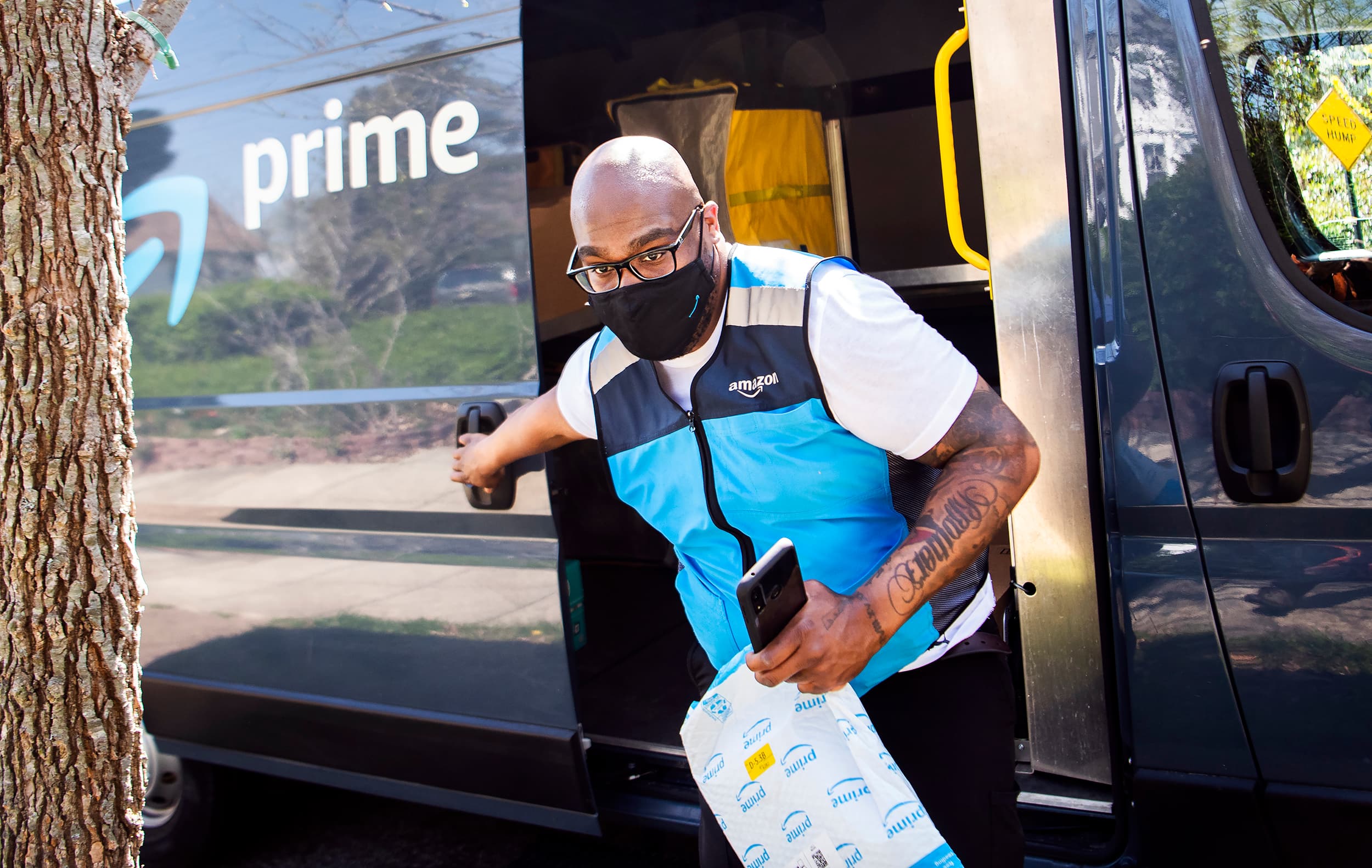
E-commerce behemoth Amazon is a company that prides itself on fast, efficient delivery to tens of thousands of customers’ every day — so they need to make sure they have robust route optimisation software in place so they can meet their incredible demand. The company uses
AWS Amplify, a set of tools and features to build full-stack applications on AWS, which is integrated with Amazon Location Service, AWS AppSync, and AWS IoT Core to provide a reference solution for transportation and logistics tracking.
The software uses a route entry component which allows the dispatcher to enter and store origin, destination, and waypoint locations using a map. It also calculates the lowest cost route based on the shortest time and displays the optimised route on the map for the driver to follow. Lastly the AWS has a tracking feature to track the driver on the map as they complete their route.
UPS
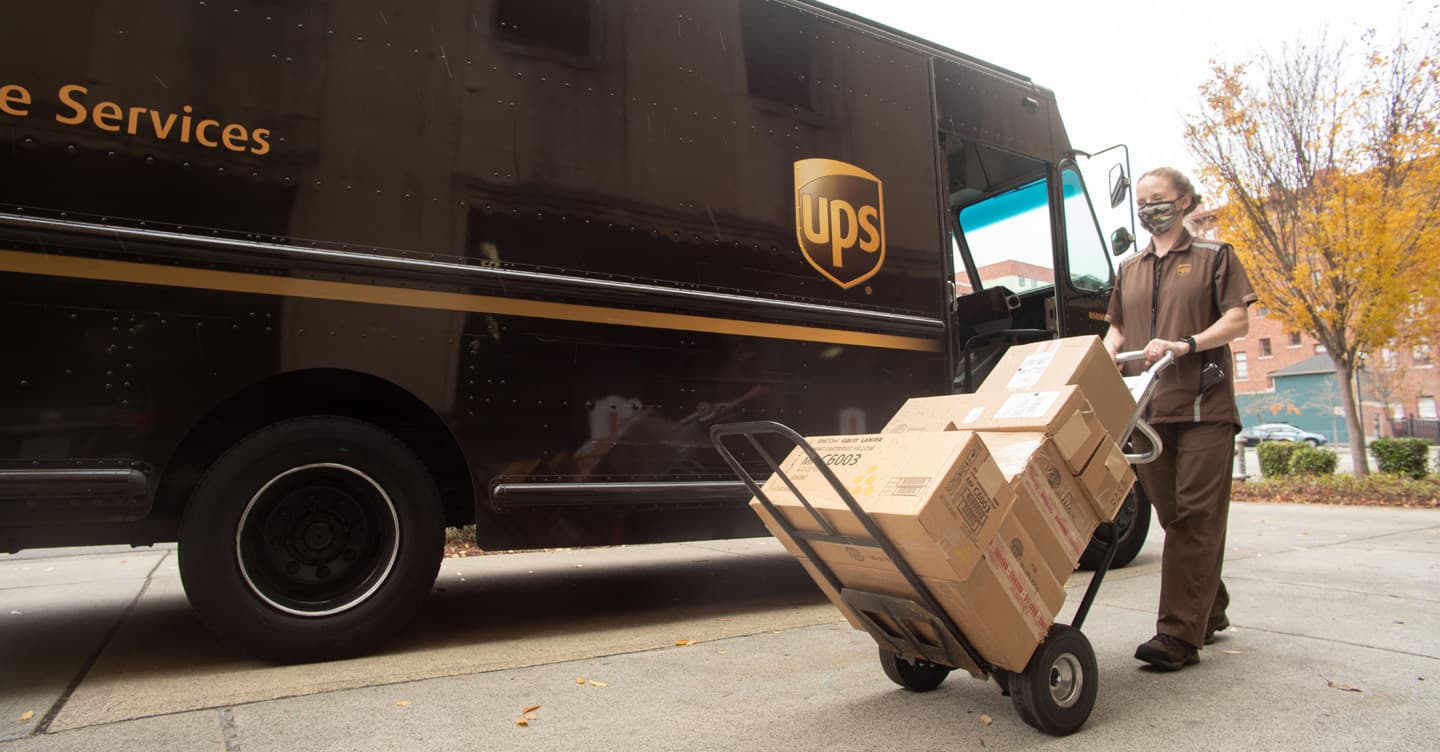
Delivery company UPS also has its own in-house route optimisation software that it uses to increase the efficiency of its deliveries. UPS uses ORION — an acronym for “on-road integrated optimisation and navigation.” ORION is a dynamic system that uses advanced algorithms to optimise driver routes, and gives them access to pre-planned multi-stop drops through their personal handheld devices. UPS uses their software to reduce fuel costs and reduce their carbon footprint.
Uber Eats
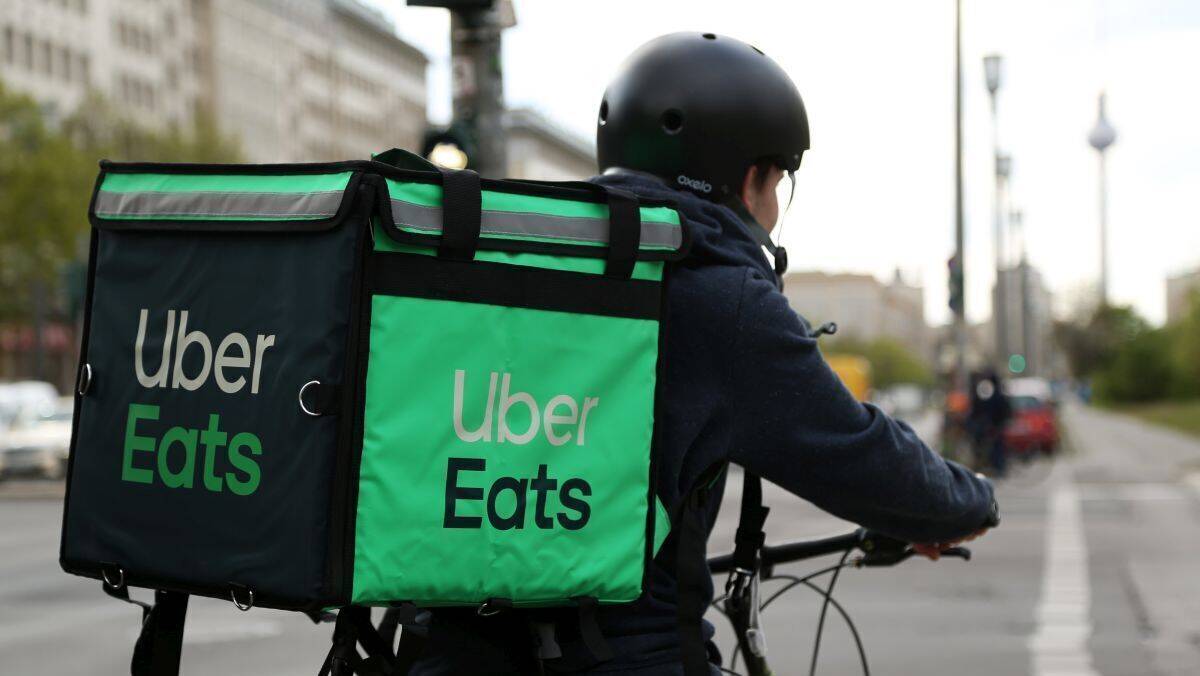
Food delivery service Uber Eats uses trip interfaces and machine learning to optimise delivery times. They needed to develop a process that painted a clear picture of when a delivery-partner was on the road, walking or stuck waiting, so that all these points could be optimised so the driver was not left waiting at the restaurant or the food arrived with the customer too late. To do this they aggregate GPS and sensor data from Android phones to create a detailed Trip State Model for Uber Eats. Using this model they are able to understand what’s happening in the real world in real-time, optimise dispatch to improve the food’s freshness and work with restaurants to reduce delivery-partner waiting and parking times.
Route Optimisation: Frequently Asked Questions
What is route optimisation?
Route optimisation is the process of finding the most efficient and cost-effective route by considering factors such as distance, number of stops, driver availability, traffic conditions, and vehicle capacity.
Why is route optimisation important?
It improves delivery efficiency, reduces operational costs, increases customer satisfaction, and supports sustainability by lowering fuel consumption and emissions.
What’s the difference between manual and automated route optimisation?
Manual optimisation relies on human knowledge and tools like maps or spreadsheets, suitable for small operations. Automated optimisation uses algorithms, APIs, and GPS data to plan efficient routes in real time, ideal for companies with high delivery volumes.
What is the difference between static and dynamic route optimisation?
Static optimisation creates fixed routes that change infrequently and ignore real-time updates. Dynamic optimisation recalculates routes daily, considering live traffic, weather, and road conditions for more accurate delivery times.
What are the main benefits of route optimisation?
It increases efficiency, reduces costs, boosts driver and customer satisfaction, improves sustainability efforts, and allows for better use of vehicles and staff.
How can route optimisation reduce delivery costs?
By minimising travel distance, avoiding traffic, and optimising fuel use, route optimisation can reduce delivery costs by up to 25% according to Elogii.
Does route optimisation improve customer satisfaction?
Yes. By reducing delivery delays, missed orders, and offering more accurate delivery estimates, route optimisation leads to a better overall customer experience.
How does route optimisation help sustainability?
Optimised routes reduce fuel consumption and CO₂ emissions by up to 30%, cutting congestion and supporting greener logistics operations.
What factors should be considered when optimising routes?
Key factors include distance, traffic, delivery schedules, vehicle capacity, customer locations, driver availability, and road conditions.
What are the limitations of route optimisation software?
Challenges include real-time data accuracy, unexpected traffic events, resource constraints, software costs, and privacy concerns related to location tracking.
What are some real-world examples of route optimisation?
Amazon uses AWS Amplify and IoT for tracking routes; UPS uses its ORION system to cut fuel and emissions; Uber Eats uses machine learning to improve delivery times and reduce waiting periods.
Emily Browne is a writer for ShippyPro who blends her passion for writing with an interest in all things e-commerce. Emily strives to make complex topics more digestible, proving that the world of logistics isn't as confusing as it sometimes feels! Her expertise in supply chain management, coupled with a knack for storytelling, helps readers navigate the complex world of e-commerce and shipping.
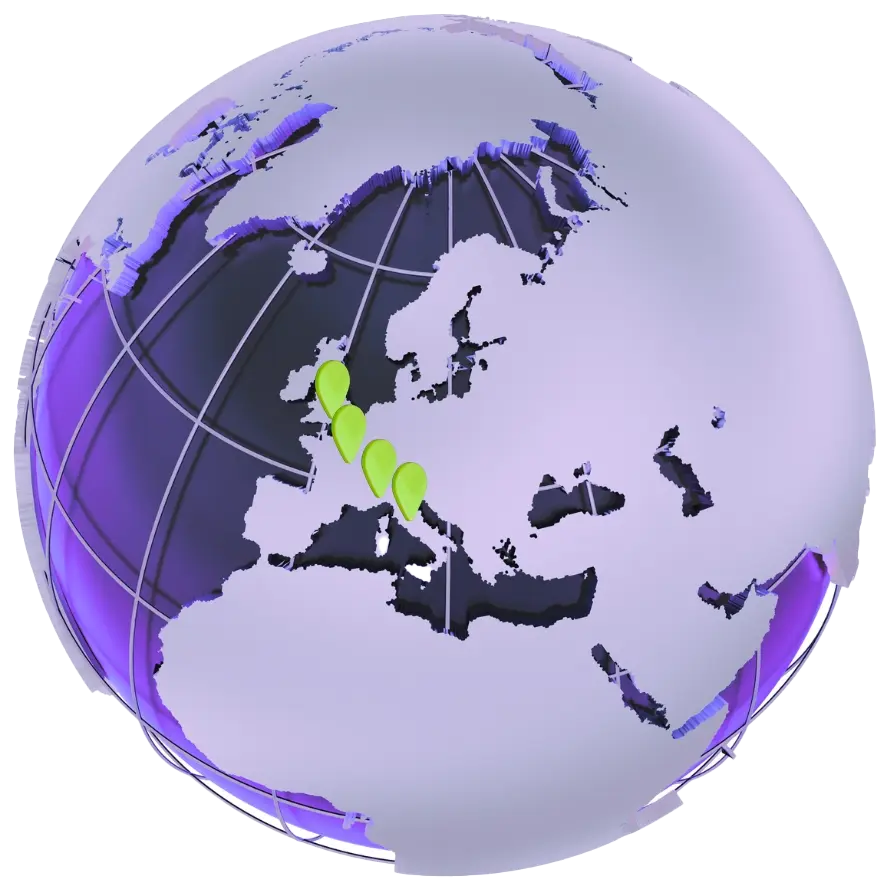


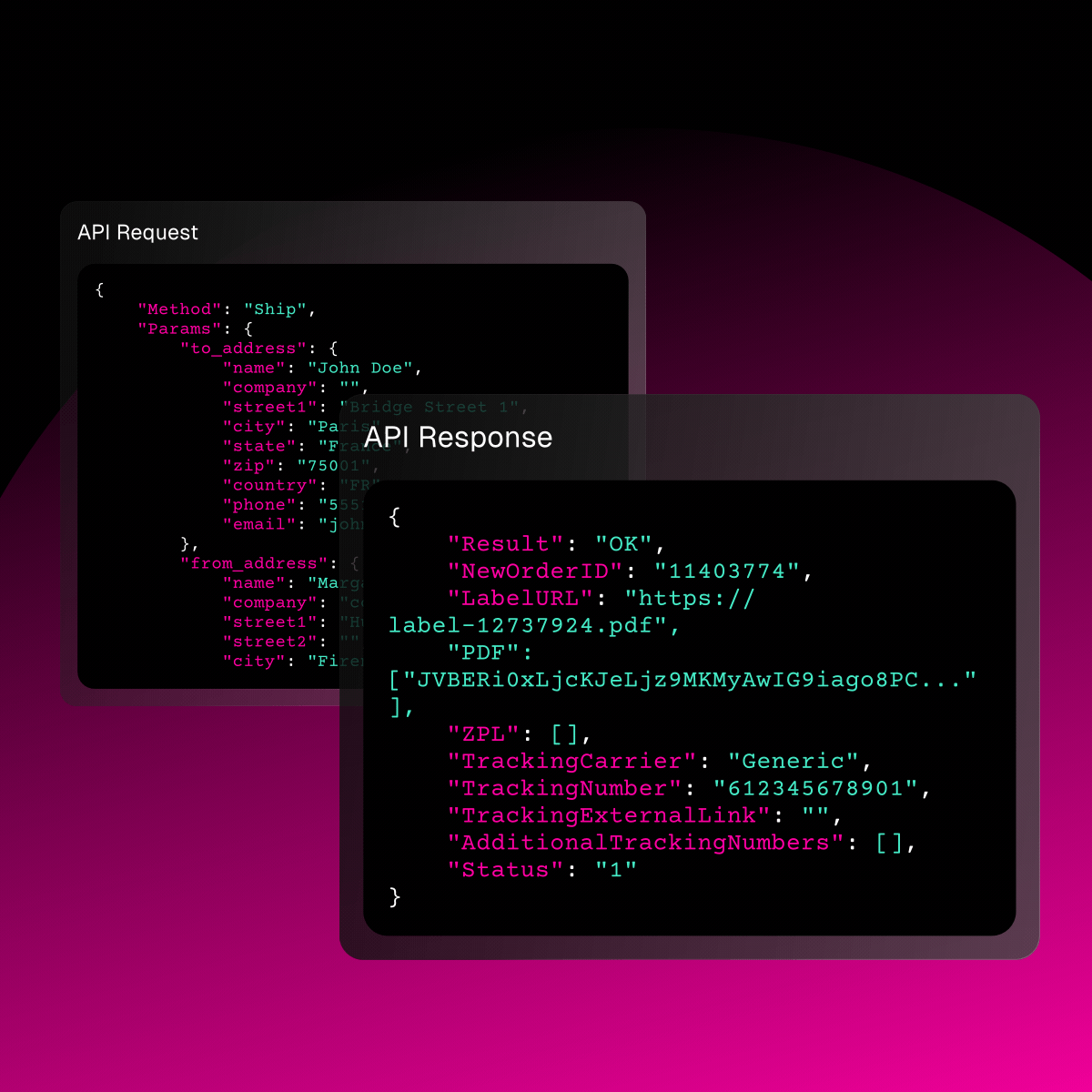


.webp)



.webp)
